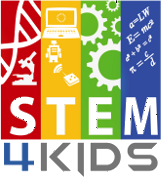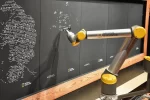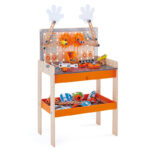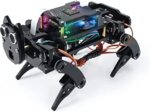STEM (Science, Technology, Engineering, and Mathematics) is a fascinating and diverse field that encompasses many areas of study, from biology and chemistry to computer science, robotics and engineering. As a kid, you might not know where to start or what STEM topics to explore, but don’t worry! In this guide, we’ll provide some tips and resources to help you get started on your STEM journey.
- Start with your interests
One of the best ways to get interested in STEM is to start with something you’re passionate about. Maybe you love animals and want to learn more about biology or zoology. Or perhaps you’re interested in how things work and want to explore engineering or computer science. Whatever your interests are, there’s likely a STEM topic that can help you learn more.
- Use online resources
The internet is an incredible resource for learning about STEM topics. There are many websites, videos, and online courses that can help you explore STEM in a fun and engaging way. Some great resources for kids include:
- Khan Academy: Khan Academy offers free online courses in many STEM subjects, including math, science, and computer programming.
- Scratch: Scratch is a programming language designed for kids that lets you create interactive stories, games, and animations.
- NASA STEM Engagement: NASA’s website for kids offers games, videos, and educational resources about space and science.
- National Geographic Kids: National Geographic’s website for kids offers articles, games, and videos about animals, nature, and geography.
- Experiment and explore
STEM is all about experimenting and exploring. Try out different projects and activities to see what you enjoy most. Here are a few ideas to get you started:
- Build a bridge: Use toothpicks and marshmallows to build a bridge and test how much weight it can hold.
- Create a volcano: Mix baking soda and vinegar to create a chemical reaction that produces a volcanic eruption.
- Code a game: Use Scratch or another programming language to create a game or animation.
- Study the stars: Use a telescope or binoculars to study the stars and planets in the night sky.
- Join a STEM club or program
If you’re interested in meeting other kids who share your passion for STEM, consider joining a STEM club or program. Many schools and community organizations offer after-school STEM programs, and there are also many online communities where you can connect with other STEM enthusiasts. Some examples include:
- STEM Scouts: A program for elementary and middle school students that offers hands-on STEM activities and projects.
- Girls Who Code: A program that aims to close the gender gap in technology by teaching girls to code.
- FIRST Robotics: A program that encourages students to build and compete with robots.
- Have fun!
Most importantly, remember to have fun! STEM is all about exploring and discovering new things. Don’t be afraid to make mistakes or ask questions. The more you explore, the more you’ll learn, and the more fun you’ll have.
In conclusion, STEM is an exciting field that offers endless opportunities for learning and discovery. By starting with your interests, using online resources, experimenting and exploring, joining a STEM club or program, and most importantly, having fun, you can begin your journey of discovery and unlock your full potential in STEM.






